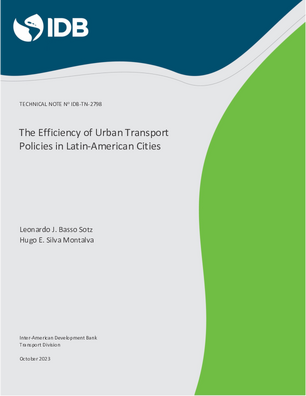The Efficiency of Urban Transport Policies in Latin-American Cities
Date
Oct 2023
Urban sustainability requires reducing the environmental footprint of urban mobility. To achieve this goal public transport becomes key due to its lower impact on congestion, pollution, accidents and greenhouse gas emissions as compared to private transport. Thus, encouraging public transport use is a frequent goal among city authorities. For this, they often devote an important fraction of their budget to improve the quality of its service. Many cities subsidize not just the infrastructure for public transport, but also its operation based on (some of) the following reasons.
1. As a second-best policy since charging additional fees to automobile drivers to correct negative externalities may be impractical (if the externality is trip specific) or politically unfeasible.
2. Due to the Mohring effect in which the optimal frequency and network density of services grow with the demand. Thus, the waiting and access time drop for every user in the system when the demand grows, implying that the marginal social cost is lower than the average social cost (Mohring, 1972).1
3. Following distributional concerns, since often lower income people use public transport more intensively.
1. As a second-best policy since charging additional fees to automobile drivers to correct negative externalities may be impractical (if the externality is trip specific) or politically unfeasible.
2. Due to the Mohring effect in which the optimal frequency and network density of services grow with the demand. Thus, the waiting and access time drop for every user in the system when the demand grows, implying that the marginal social cost is lower than the average social cost (Mohring, 1972).1
3. Following distributional concerns, since often lower income people use public transport more intensively.




